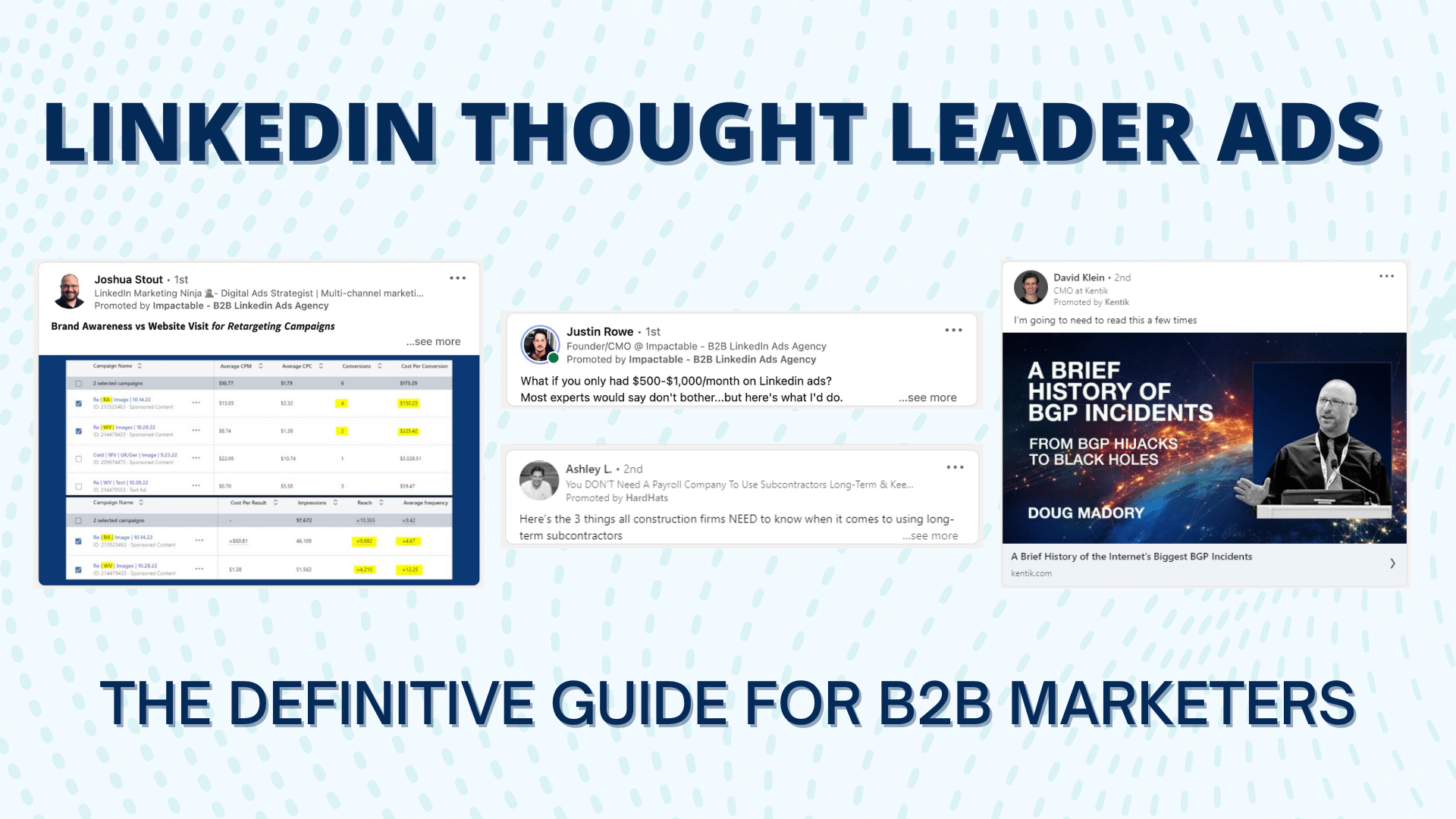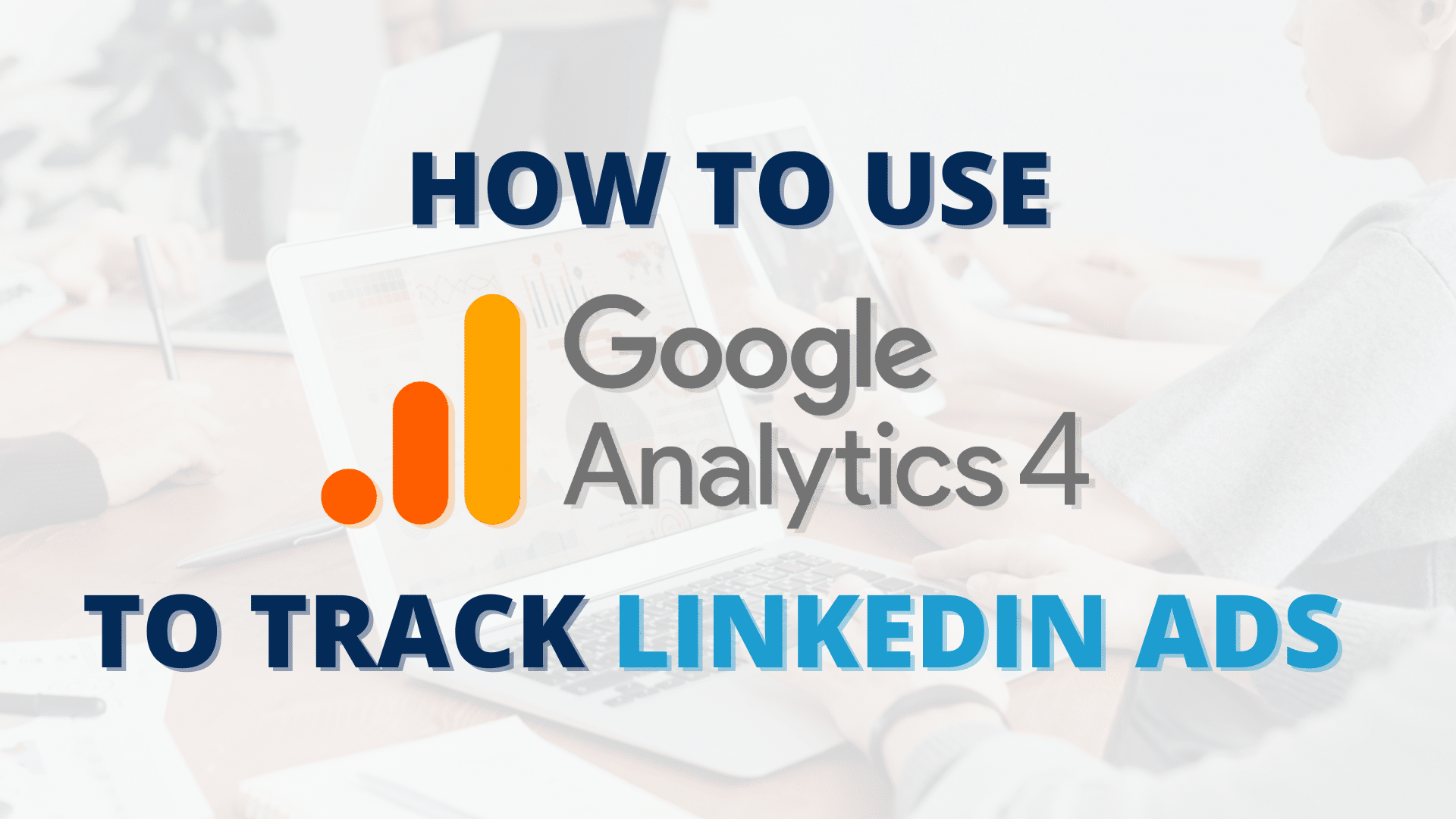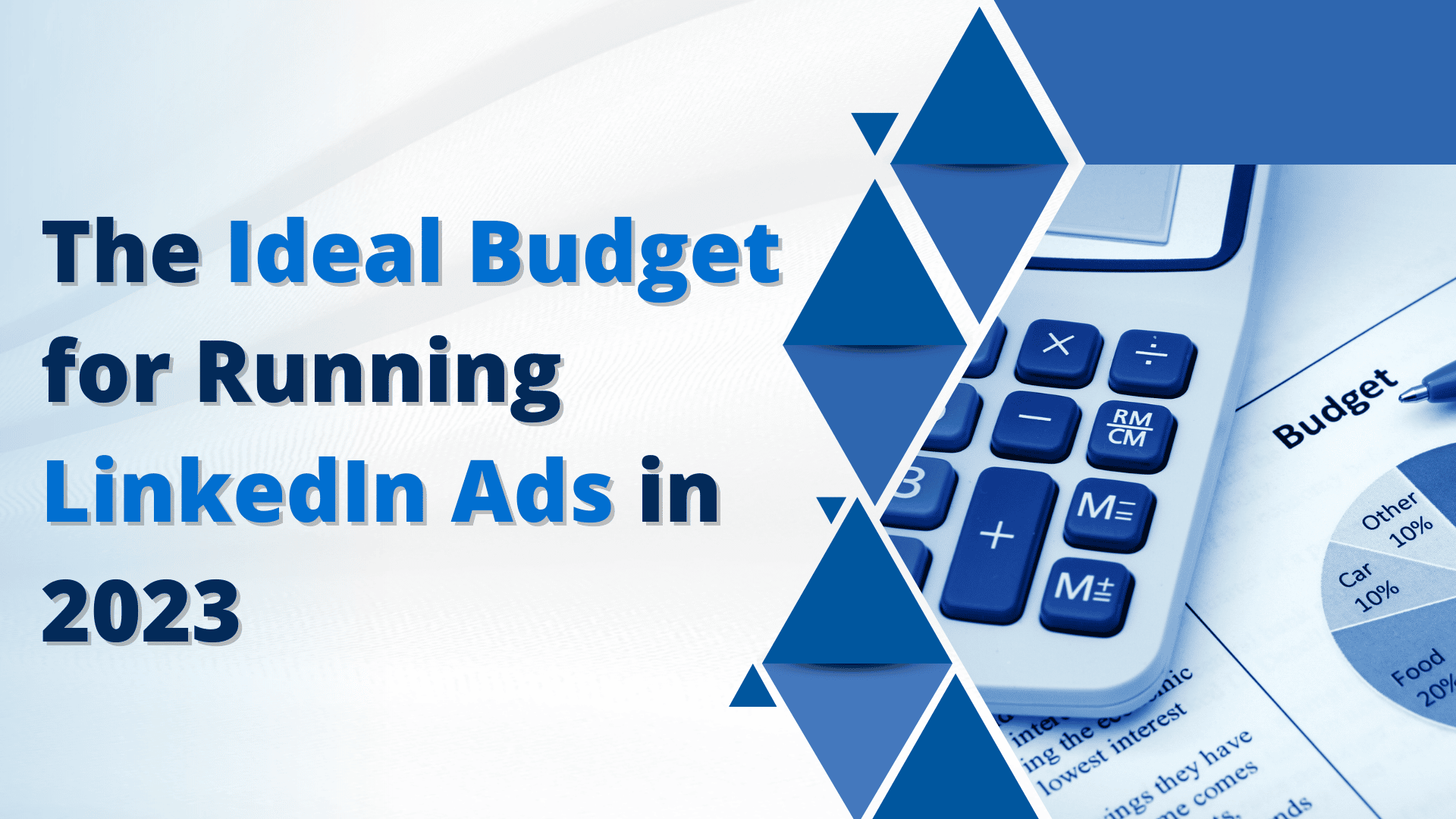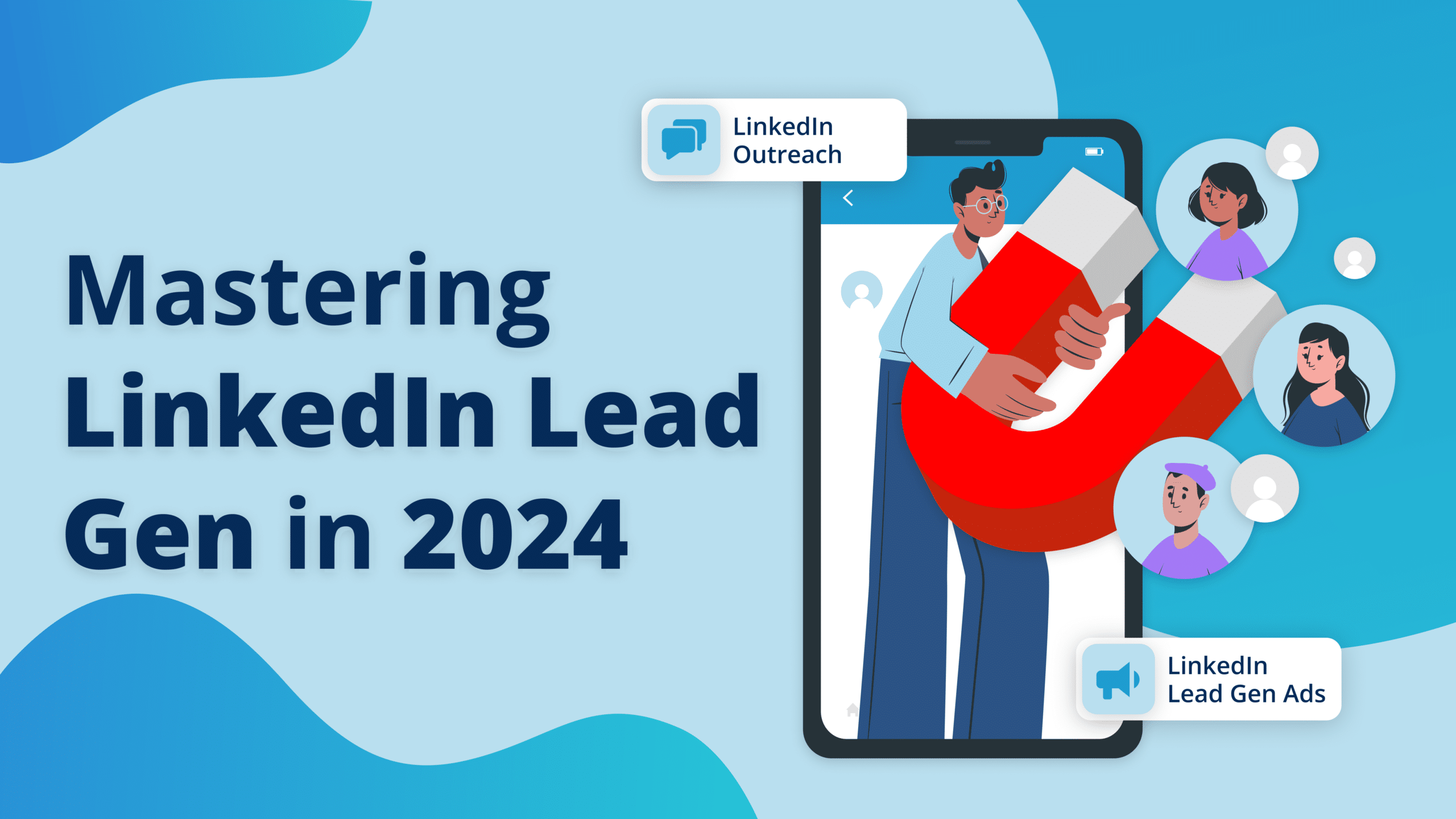LinkedIn ad frequency is the number of times the average prospect in a campaign will see an ad from that campaign in a given time period.
This is such an important concept because this metric will help inform you on how many ads to have in a campaign, how many should be running when you would need more, and even when to widen/narrow the audience or increase/decrease spend.
Let’s dive in.
A Microsoft study found that the average human attention span has declined from 12 to 8 seconds in the last decade. As a result, brands, whether entrepreneur-led SMBs or large-scale enterprises, are working strategically to establish an online presence that resonates well with their target audience. Gone are the days of relying simply on organic reach to drive conversions — today, most companies invest in paid ad campaigns to guarantee delivery of key content/assets to target prospects.
An optimal LinkedIn ad frequency ensures your campaign is more hard-hitting, not just in terms of who you target but how you communicate. It establishes brand consistency, establishes you as an authority in your space, and improves ROI.
There’s no magic number for ad frequency that delivers maximum conversions, but you should be able to gauge a ballpark figure depending on how well-established your brand is, what your target market looks like, and how familiar you are with your target market and your campaign objectives.
In this article, we will start by discussing what ad frequency is and how you can find the balance between the good, the bad, and the ugly of ad frequencies when planning your next LinkedIn campaign.
What is LinkedIn ad frequency?
LinkedIn Ad frequency refers to the total number of times a unique user sees an ad creative from a particular campaign in a give time period (30, 60, 90 days, etc) .
The metric can be calculated by dividing your total number of ad impressions by your total ad reach (reach is the unique number of people who saw your ad). For example, suppose you ran a LinkedIn ad campaign for a week targeting 4000 people that garnered 5000 impressions. In this case, your ad frequency will be 1.25, which means that most unique users saw only 1 of your ads and a few saw 2 ads from that campaign. In this scenario, the 7-day frequency was 1.25, but the 30-day frequency might be 5, and the 90-day frequency might be 15 because the campaign will continue to deliver fairly consistently to that audience.
If the example above was a 90-day retargeting campaign, you might decide that you’d need 15 ads in that campaign set to even distribution so that prospects were served fresh new ads throughout the entire 90 days that they were in the campaign.
If there were only 5 ads in the campaign, they would see each of the 5 ads 3 times throughout the 90 days.
What is considered a good LinkedIn ad frequency?
With the rapid evolution of the advertising landscape, brands everywhere focus more on creating campaigns that resonate with the prospects enough to drive meaningful conversions.
There’s a new understanding of how you can strategically monitor ad frequency to boost campaign effectiveness — most marketers, for example, consider ‘the rule of seven‘ to be ideal, which states that a potential customer is more likely to purchase after interacting at least seven times with your marketing collateral, including paid ads, printed brochures, newsletters, ebooks, infographics, and other branded content.
The reasoning is simple: Constant exposure to your brand’s message and product offerings establishes ‘brand recall’ i.e. people start associating your brand with specific products/services, so when the need arises, yours is the first company they think of.
Nielsen (2017) found that, apart from helping create brand awareness, ad frequency ranging between 5 to 9 exposures also increased customer resonance by 51%. The study also reported that ad frequency directly correlates with improvements in click-through rates (CTR) and decreased cost per action (CPA) — on the other hand, campaigns with poorly-tuned ad frequencies had quite the opposite effect.
That being said, I have come across campaigns where the budget was extremely high, and the ad frequency was 86 (for 30 days); one can safely assume that, at that point, people were starting to get annoyed with the ads from this specific brand.
The correlation between increased ad frequency and improved ad performance doesn’t last forever—a higher ad frequency in no way guarantees maximum campaign effectiveness as there will eventually be diminishing returns.
For an average client running LinkedIn ads for ‘cold’ audiences, the target groups are usually 100,000-150,000 in size, and the average ad frequency is around 1.5.
Here, the campaign will include anywhere between 5 to 9 ad creatives, however, given that the ad frequency is only 1.5, a prospect will see 1 or, at most 2 of your ad creatives.
So, while it’s important to experiment and start with 5 to 8 different ad creatives but the goal should always be to keep A/B testing their effectiveness for the duration of the campaign and narrow down your showstoppers.
This ensures you have at least one tried-and-tested ad creative that most of your ‘cold’ audiences see.
In the end, it’s important to remember that showing an ad too often will attract negative feedback from your target audience, whereas showing it too few times will fail to make a lasting impact. Based on my personal experience, an ad frequency of 5 does better than 1 or 2, and 10 probably does a whole lot better than 3-4, but past that, you’re looking at diminishing returns. There’s no secret number, but I’d recommend between 5 to 10 as a ‘sweet spot’.
What affects LinkedIn ad frequency, and how can you increase it without being invasive?
1. LinkedIn Ad types
Ad frequencies differ based on LinkedIn ad types — for example, one of the many reasons why I love text ads on LinkedIn is that even with just $10 a day, you can get an ad frequency of 30 for the average retargeting audience size. So, if your prospects log onto the platform multiple times a day, they will see one of your ads to the right of the feed and your logo is constantly on their screen.
Despite being underused (compared to single-image ads), text ads offer the highest ad frequency, especially if you’re dealing with a relatively small target demographic. At Impactable, one of our retargeting campaigns has a 4,000-sized audience, and with $10 a day, we are able to average an ad frequency between 30 to 40.

In the figure above, you can clearly see the difference between the ad frequency of the cold layer (1.48) and retargeting layer (37.93)
Here, the cold layer of ads refers to ads you put in front of a ‘cold’ audience — people who have never seen or interacted with any of your ads. When the audience size is 60,000-1500,000, and the ad frequency is 1-2, the prospects will see your ads at most two times. The retargeting layer refers to ads that target people who have visited your website, filled out a lead generation form, signed up for a newsletter or engaged with your brands in any way. Most importantly, you’re dealing with a much smaller group than the previous one. For instance, a retargeting group for, say, 90 days will consist of 2,000-10,000 people, as opposed to a ‘cold’ audience of 200,000. We saw the ad frequency go up to 15 in this case, which means that your ads will appear 15 times in front of people with a high purchasing intent for a relatively low spend.
We also discovered that follower ads (i.e., dynamic ads that encourage users to follow your LinkedIn or Showcase page) offer less frequency than text ads but more frequency than single-image ads.
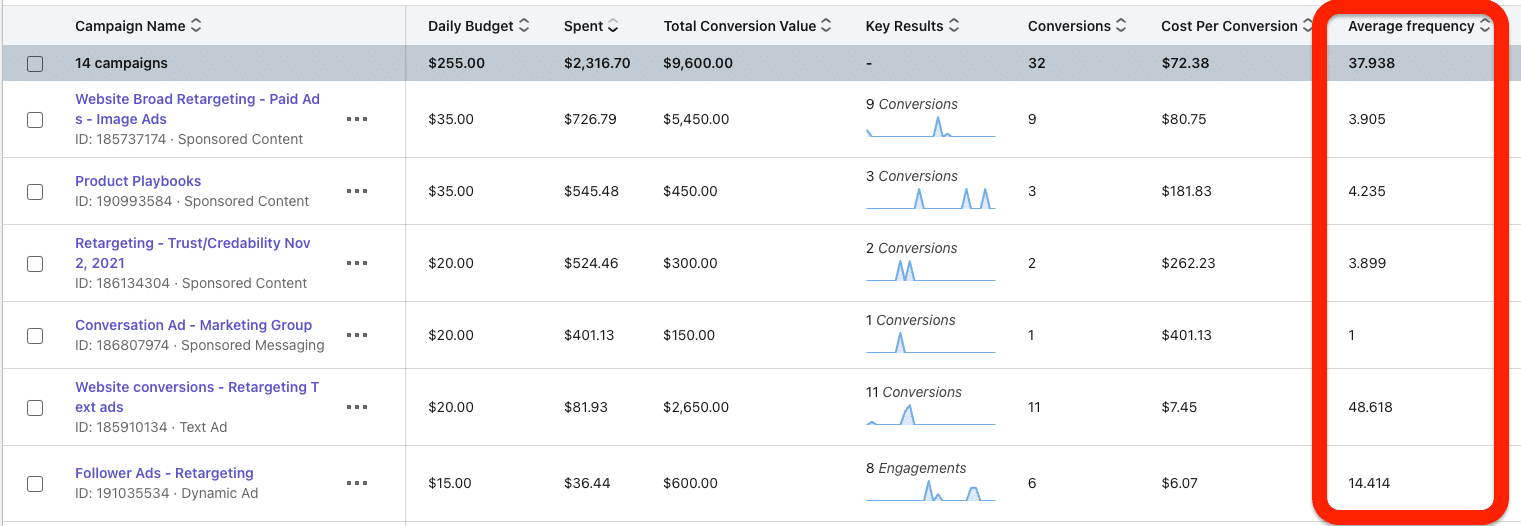
Linkedin text ads also come out on top with the total number of impressions generated. We ran a single-image campaign for $30 a day and garnered close to 20,000 impressions with an ad frequency of 3-4. On the other hand, a text-ad campaign with a budget of $10 a day received 115,000 impressions. Not only did we spend a third of the money, but we also generated 5 times the impressions. Remember, text ads might not be every brand’s cup of tea — depending on the industry, they can be less impactful than visual-heavy ads; however, with greater ad frequency, they are better at getting noticed by prospects.
2. LinkedIn Budget and audience size
Audience size matters as well. For instance, if you want to increase frequency, you can consider dialing down your audience size, so your ad is served multiple times to a much smaller (but relevant!) audience. Or, you can look into increasing your daily budget to be more conducive to your audience size.
For many brands, when they are just starting with LinkedIn retargeting, they have an audience group of 300-400 people that can be easily targeted with a budget of $10 a day. Over time, as the audience grows to, say, 6000-8000, you’re suddenly left with two options:
- You add extra layers to the retargeting — for example, a campaign that targets unique users who have not only visited your website but also hold a Director’s position in their company and are located in Atlanta, GA. This helps to downsize your target audience while ensuring you still have a good ad frequency.
- You increase your budget from $10 to $20 a day. In the grand scheme of things, a $300 a month increase (approximately) won’t be considered a huge jump for medium-to-enterprise level companies and would result in 4-5 extra touchpoints for each prospect.
3. LinkedIn Retargeting
LinkedIn retargeting is one of the most important parts of any company’s digital marketing strategy. Running ads for an audience group within your target demographic already expressing interest in your brand is more likely to yield long-term, meaningful results.
For most people, the retargeting group consists of 2000-5000 people, all of whom are website visitors or visitors of a certain landing page. This is much smaller than the ‘base group’ that you were initially targeting. Now, when you run a single-image ad for an audience of 3000, you might end up with an ad frequency of 8-9 or 6-8. An average prospect will not see ads from your campaigns 6-9 times — here, you can ensure they see your best-performing creatives multiple times, or a different creative each time (recommended for when you’re A/B testing).
4. LinkedIn Ad seasoning
At Impactable, we spend anywhere between $150-$300 per day on our running LinkedIn ads for ‘cold’ audiences that include 8 or 10 creatives, but recently, we’ve paused all of them except for 2.
We noticed that around 95% of the prospects who entered our LinkedIn ads funnel saw this one specific ad. When we first hit ‘start’ on that, it had no engagement i.e. zero likes, comments, or shares. Eventually, it surpassed all our other ads in terms of performance and currently sits at 140 likes, 78 shares, and 5-6 shares.
Now that we know which one, out of the 8-10 creatives, is resonating the most with people, it makes more sense to simply lead with that ad instead of the others. Even if we were to create a new ad emulating the visual style of this one, wherein we slightly alter the copy and/or images to be more persuasive, it would be difficult to achieve engagement of similar stature.
Ultimately, you can ‘season’ your overall ad campaign strategy and make the most of your ad frequency by narrowing down and running ads that are proven to drive conversions.
Behind the scenes: An Impactable case study on improving LinkedIn ad frequency
We were working with a software company that had already set up a retargeting group, comprising all website visitors, since their foray into online ads. They had started by spending $20 a day with an ad frequency of 5-10, and by the time Impactable took over, their audience group size had grown to 50,000-60,000 people, and their ad frequency was down to 1.
Side note: This happened because the number of website visitors increased with time, as a direct result of paid and organic reach, but the budget remained unchanged. LinkedIn was now using $20 a day to target a much larger audience group, and as a result, the ad frequency fell drastically.
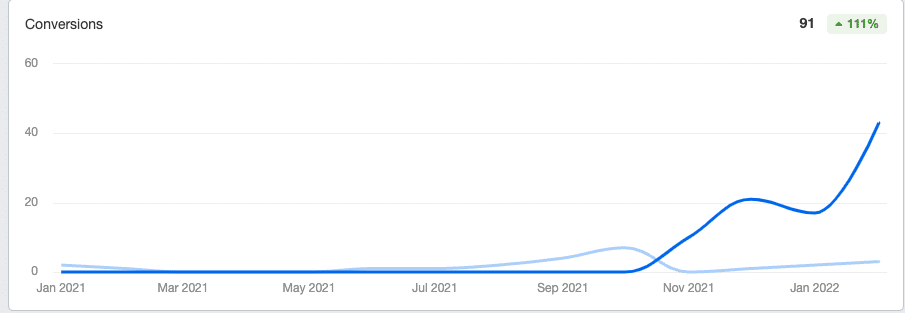
The whole point of retargeting is that you can stay in front of your target demographic multiple times a day for a relatively low price, but if your audience has outgrown the budget allocated to it, most people will be seeing only one of your ad creatives if at all. I took a two-pronged approach to this problem:
First, I funneled some of the money from other campaigns into a singular retargeting campaign to increase the budget. Second, I added an extra layer of retargeting filters — apart from being a website visitor, people belonging to the new, reformed retargeting audience were expected to fulfill other criteria like being a decision-maker, located in a particular geographic region, or specializing in so-and-so industries.
Finally, we were able to increase the ad budget, and get the retargeting audience size down to 15,000. As a result, the ad frequency went up to 5-6. The client started noticing improvement in their conversion rate because the ads were now being served to a curated list of ‘hot’ audiences.
In Conclusion
After your prospects click on an ad and visit your website, they might need a nudge from another one of your ads before they make a purchase. Similarly, if they are new to your brand and the products/services you offer, they need to see a couple of ads from you to be persuaded into conversion. However, too many ads can be annoying and intrusive for the end-user, and that’s where ad frequency comes in and allows you to exercise more control over your LinkedIn ad exposure.
We hope this article gave you a deeper, more consolidated understanding of what ad frequency is, how it impacts conversions, and how you can weaponize it to make the most of your campaigns. At Impactable, improving the ad frequency to generate maximum results is just one of the things we help our clients do. Book a demo and get access to a team of LinkedIn experts who can assist you in running qualitative ads and much more

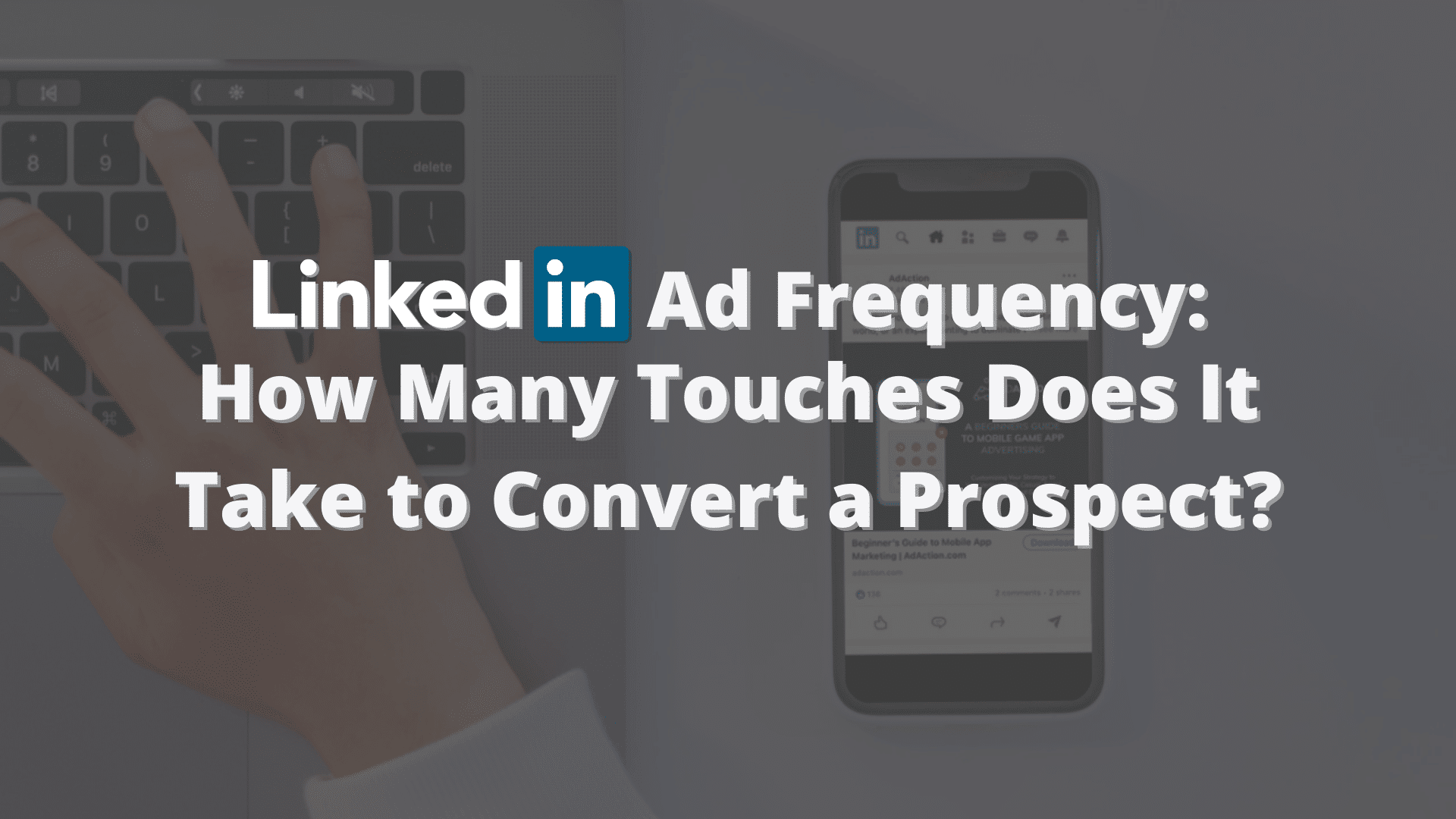
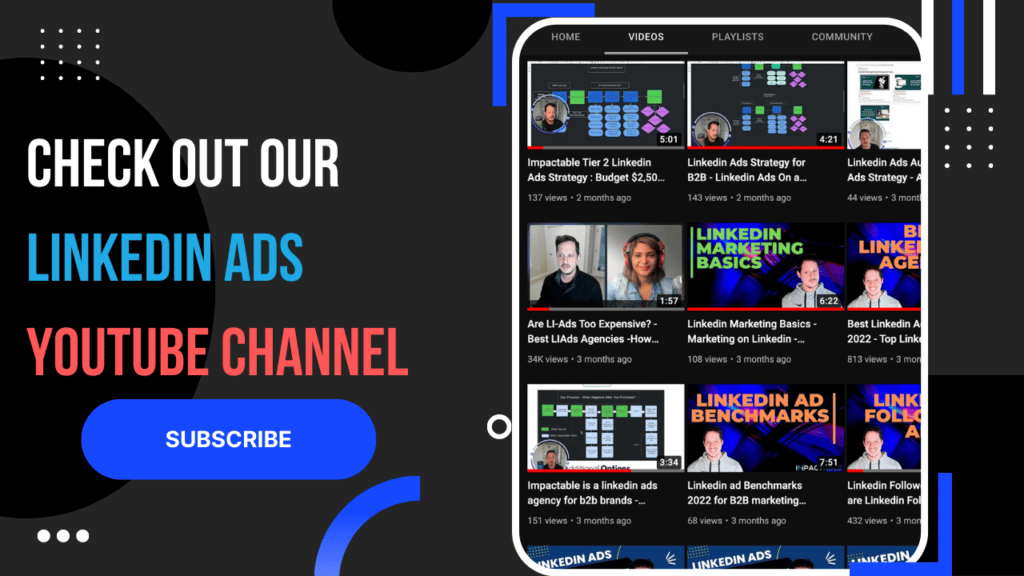



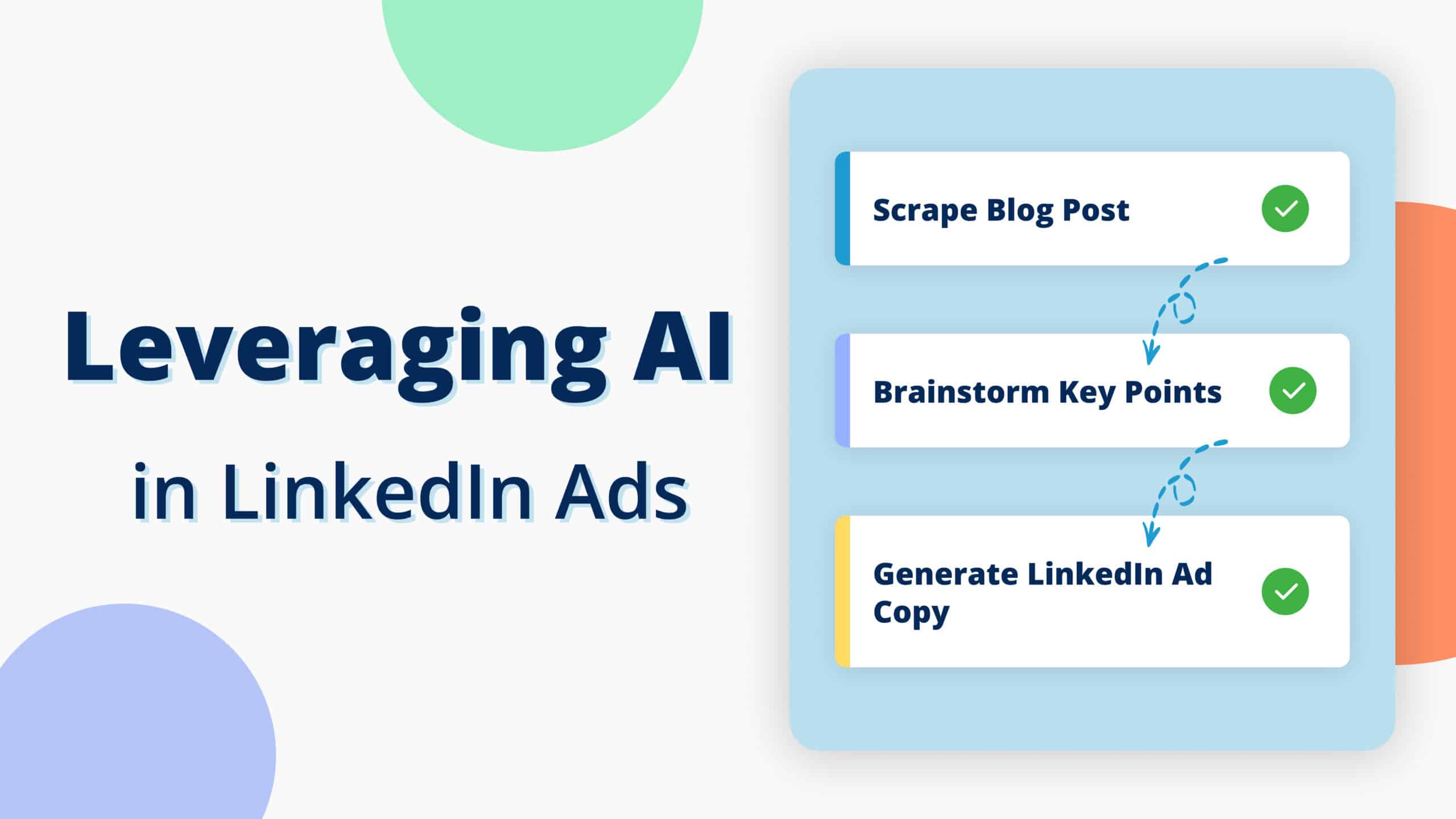
![9 Steps To Lower Your B2B Website Bounce Rate [And Improve Conversion Rates]](https://impactable.com/wp-content/uploads/2024/03/Group-12387.png)
